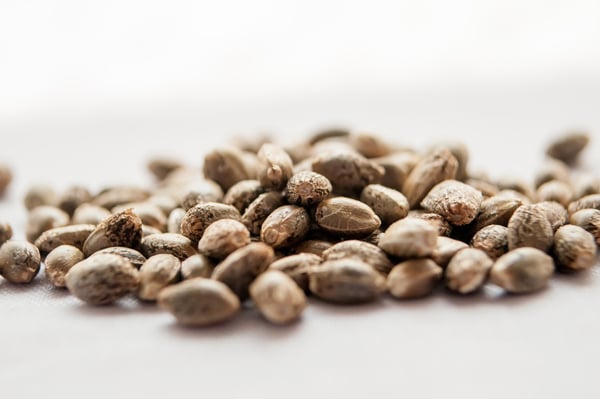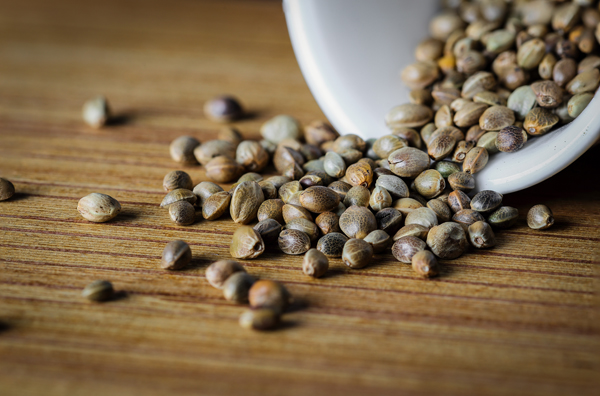First things first
For the best chances at success in germination, place your seeds on a moist paper towel, with a few inches between each seed. Cover the seeds with more moistened paper towel, or simply fold it over on itself, then place the bundle in a resealable bag, or enclosed container, for 24 to 36 hours.
Gimme’ the dirt
The lucky few seeds to germinate will form a tap root. Once this happens, find a “solo cup” size (16 oz) container with holes in the bottom for drainage. Fill it to the top with a good draining, low-nutrient soil - in the early stages, avoid using a soil with lots of added nutrients as it may cause damage to the young seedling. Place your germinated seed about an inch deep into soil, with the root pointing downwards. As the plant grows, you’ll need to transplant it to bigger pots, perhaps a few times, in order to allow space for the roots to develop.
During the different stages of its lifecycle, your plant’s nutritional needs will change. For the first 3-4 weeks your plant will not require much nutrients. Around the time your plant opens its first leaves, you can slowly introduce vegetative nutrients. When your plant starts to flower, you may want to switch to nutrients designed to encourage blooms. These nutrient blends usually contain lower levels of nitrogen. Too much nitrogen in the flowering stage can stunt bud growth and add a nasty chemical taste to your final product. In the last couple weeks before harvest, you’ll want to cease using nutrients entirely and use pure water in order to flush the roots. Expect lots of trial and error until you find the mix that makes this temperamental plant happy!
Water, water everywhere
It is important to keep the plant rather moist in the first couple weeks as the roots develop but be careful not to over-water. Over-watering can cause the roots to rot and cause mold to develop. A good rule of thumb is to fully saturate the soil with water until excess run-off starts to pass through the bottom. Water again once you notice the plant’s container feels light.
Let there be light
In the weeks following potting, plants grown indoors should be given a minimum of 18 hours of light per day and can be exposed to up to 24 hours of light. Once the desired height of the plant is reached, you can encourage your plant to switch to the “flowering” phase by limiting light exposure to 12 hours per day (this means 12 hours of dark too). During the flowering phase your plant will start to produce those, oh so important, buds.
If you’re growing outdoors, this process will occur naturally, as the days become shorter at the end of the outdoor growing season - just be sure to pick the right outdoor location for sun exposure and shade.
The flowering phase can take anywhere from 12-18 weeks, depending on the strain.
The Right Tools for the Job
If you’re planning to grow indoors you’ll have to invest in some key elements including Grow Lights and a fan to circulate air in the growing space. Depending on how large or small the space is, you may also need temperature and humidity control. The list of options is almost endless!
If you’re growing outside, you won’t need a lot of fancy equipment, but you are at the mercy of mother nature: critters, pests, too much sun, too much rain, too hot, too cold…shall we go on? However, if you’re ready to put in the time and keep a close watch, this is the most economical growing method. Do your homework and decide which growing method is the right fit for you.
Procrastinator?
If you decide to hold on to your seeds for a while before planting, you should store them in a cool, dark place. Humidity, as well as rapid fluctuations in temperature, are the enemies of seed preservation.
Try, Try Again
Growing cannabis is tricky, is an investment and success isn't guaranteed. But with continued effort and a desire to learn, you will be on your way to harvesting your own crop of bud.


